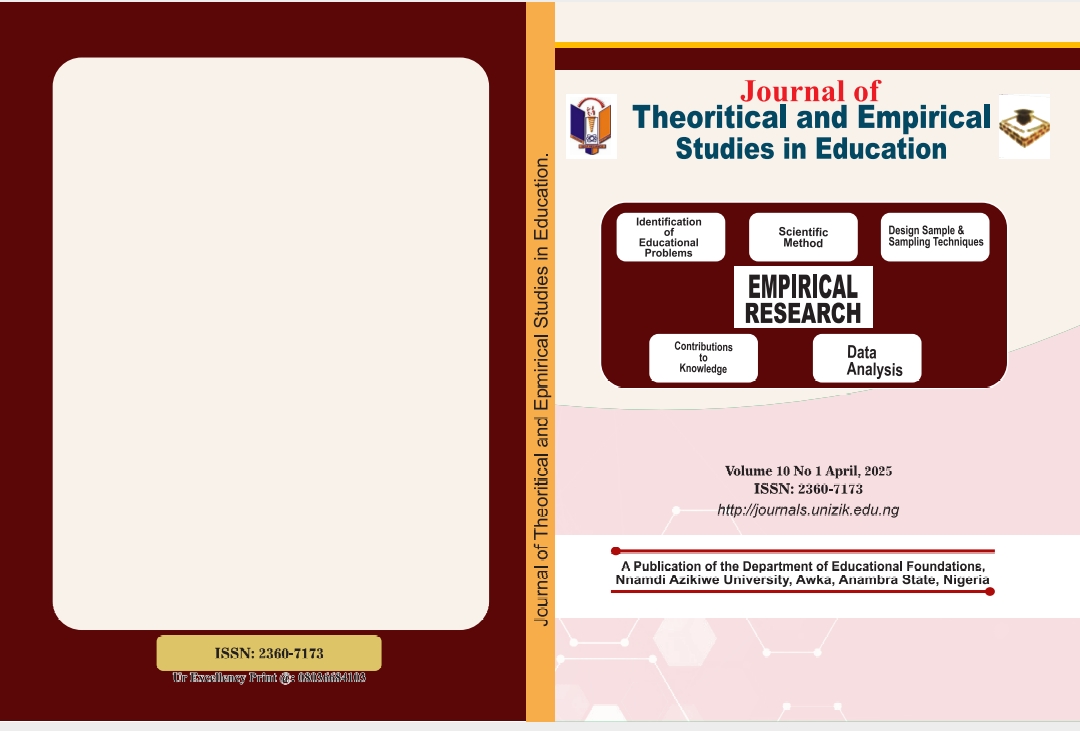Development of a Social Phobia Scale for Assessing Undergraduate and Senior Secondary Students in Nigeria
Keywords:
Social Phobia, Students, Psychometric Properties, Gender Differences, Educational LevelsAbstract
This study developed, validated and standardised an instrument for measuring social phobia among Nigerian students. The instrument is called the Students’ Social Phobia Scale (SSPS) and comprises of five subscales namely: fear of people in
authority, fear of meeting new faces, fear of being criticized by others, fear of public speaking, and fear of performing in public. The research examined the overall level of social phobia, its manifestations across different subscales, and variations by gender and educational level. A total of 608 students, including 277 undergraduates and 331 senior secondary school students, participated in the study. This was composed of 284 male students and 324 female students of both undergraduates and senior secondary. Cronbach’s alpha was used to establish the internal consistency of the instrument and exploratory factor analysis was used to establish its construct validity. The internal consistency of the entire instrument using Cronbach's alpha was 0.976 and that of the subscales ranged from 0.893 to 0.934. The stability reliability coefficient of the entire test was 0.940 while those of the subscales ranged
from 0.864 to 0.918. These estimates confirmed the SSPS’s stability over time. The findings suggest a moderate overall level of social phobia among the students, with significant differences across subscales and demographic variables. The maximum
and minimum scores obtained were 200.00 and 40.00 respectively with a mean score of 115.87. Gender differences revealed that female students exhibited higher levels of social phobia (118.24) compared to male students (113.14), while senior
secondary students showed greater anxiety (117.54) than undergraduates (113.82). The normative data provided benchmarks for interpreting individual scores, with senior secondary and female students reporting higher mean scores. The study recommends the use of SSPS for targeted interventions, including gender-specific programmes and age-appropriate strategies, to address the varying levels and manifestations of social phobia.




